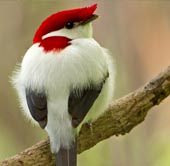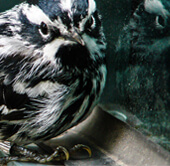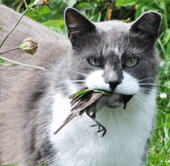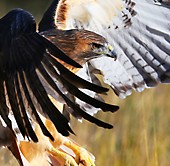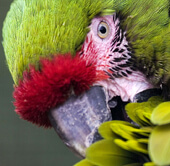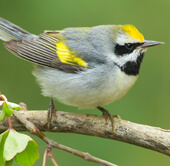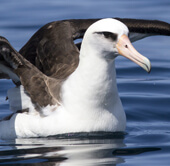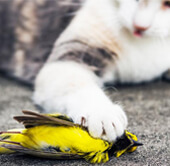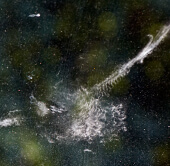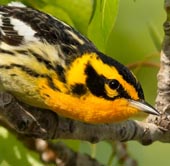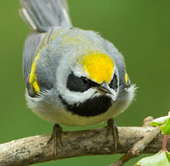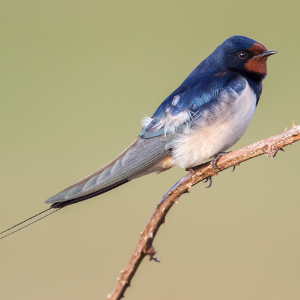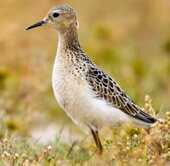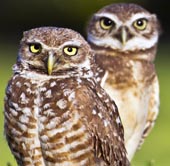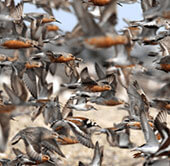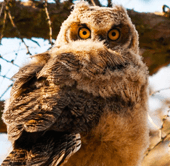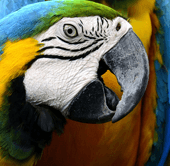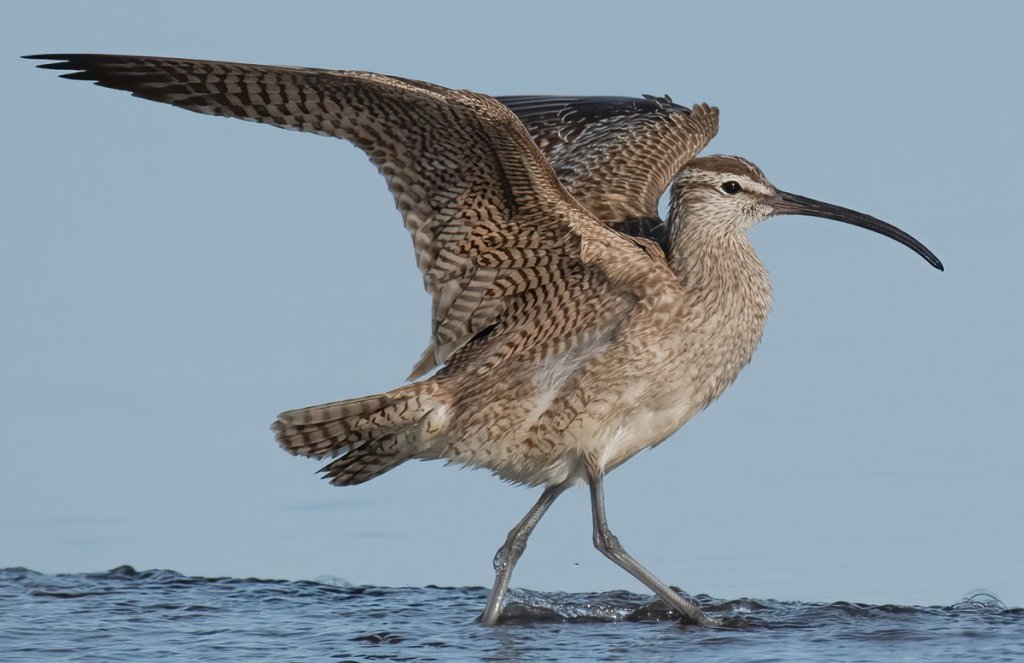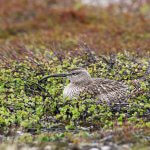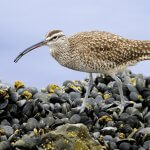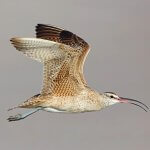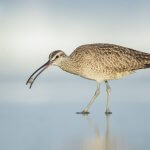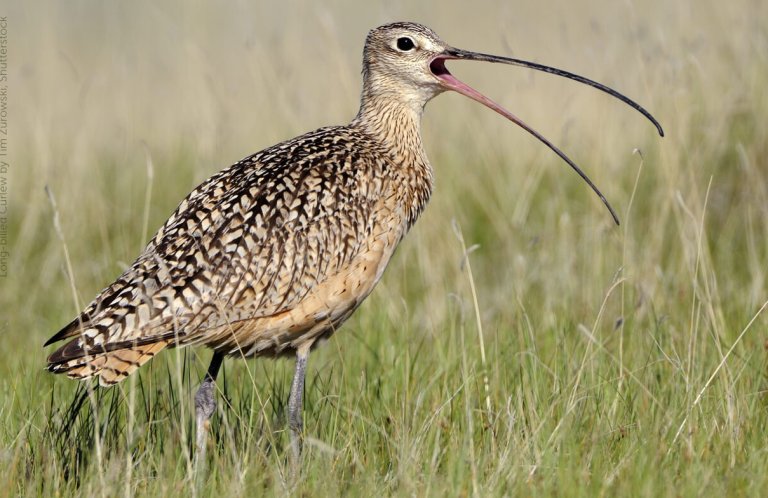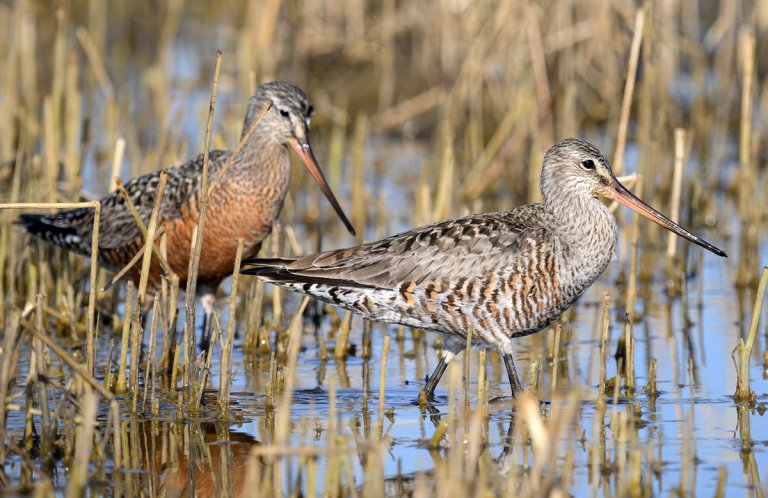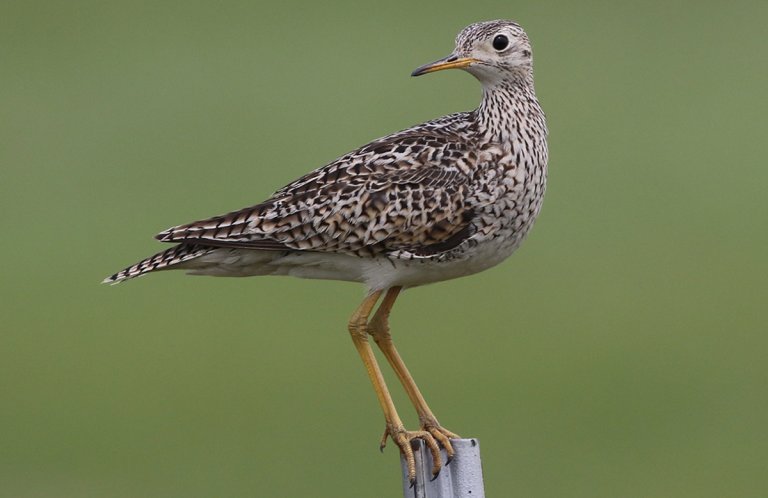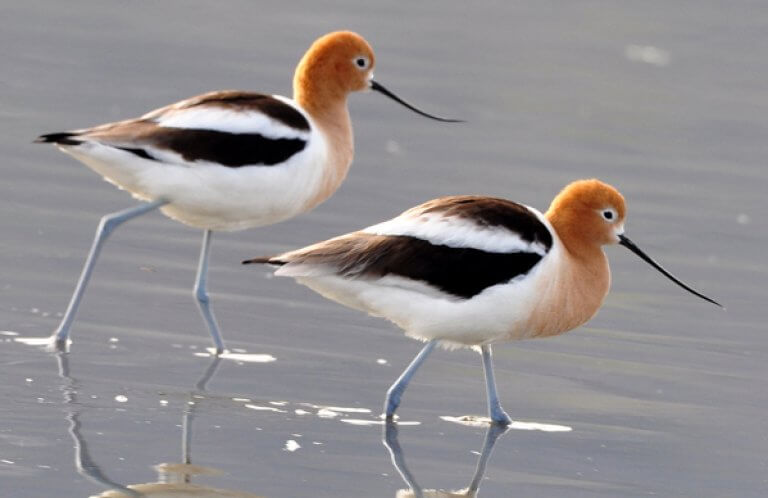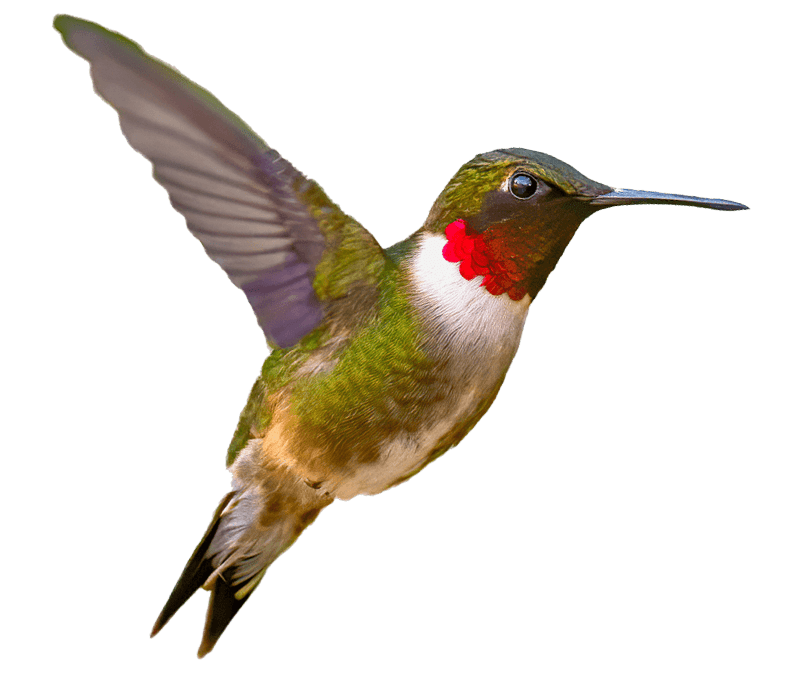About the Whimbrel
The Whimbrel is a large shorebird, about the size of an American Crow. Like many members of its family, this bird has drab-looking brownish plumage; its most distinctive features are a long, down-curved bill, reminiscent of the closely-related Long-billed Curlew, and a brown-striped crown. Its genus name, Numenius, is Greek for “new moon,” and refers to the crescent shape of the Whimbrel's bill.
This species is the widest-ranging of the world's curlews, nesting in Arctic regions across North America and Eurasia. The North American population of Whimbrel, N. p. hudsonicus, was considered a separate species, called the Hudsonian Curlew, until 1957.
This unassuming-looking shorebird has some interesting folk names. The Whimbrel's common name and the odd nickname “Jack Titterel” most likely refer to the sound of its whistled calls. Another of the Whimbrel's nicknames, “Seven Seas Whistler,” gives a nod to its worldwide distribution. The most unusual of this bird's nicknames, “Peerie Whaap,” originated in the Shetland Islands, from the Scottish words "Peerie" (small or tiny) and “Whaap” (curlew).
Songs and Sounds
The Whimbrel is quite vocal, giving a variety of whistled calls which gave it the nickname of “Seven Seas Whistler”.
Flight Call:
Song:
Call:
Breeding and Feeding
After arriving on the breeding grounds, the male Whimbrel begins flight displays to attract a mate, flying high, circling, then gliding down while calling. New pairs also engage in courtship chases on the ground and mid-air. Pairs are monogamous and fiercely territorial, mobbing and chasing away potential nest predators.
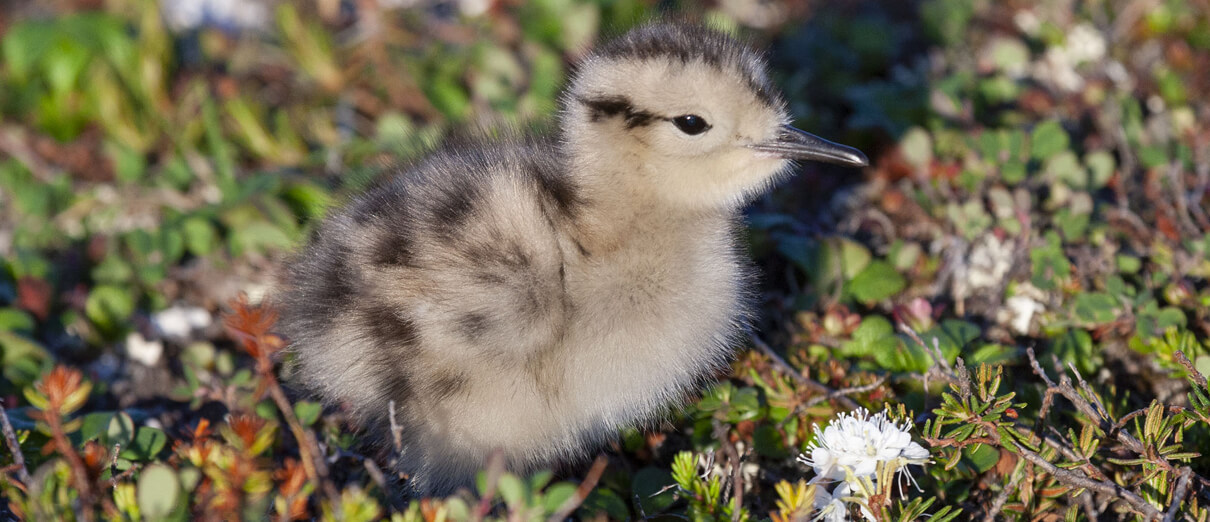
The female Whimbrel creates a simple scrape on the ground for her nest, usually atop a hummock or near a small shrub. She lines the scrape with lichen, moss, leaves, twigs, or grass. She lays a clutch of four greenish, blotched eggs. Both parents take turns incubating the eggs for close to a month. The precocial hatchlings are able to leave the nest and feed themselves within several hours. The parent birds continue to protect them after they leave the nest, until migration begins.
The female Whimbrel begins her southbound migration about a month after the chicks hatch. Her mate stays with the chicks until they fledge, then departs, followed by the young after another month or so. Young Whimbrels will usually remain on the wintering grounds for their first year or two.
The Whimbrel's long, curved beak serves as a multi-purpose feeding tool, employed differently according to the season. On its breeding grounds, the Whimbrel picks insects, snails, berries, and other vegetable matter from the surface of the ground with the tip of its bill. During migration and in winter the Whimbrel digs deeper, using its beak to probe invertebrate burrows along muddy and sandy shores as it forages for invertebrates, particularly fiddler crabs, a favored food.
Region and Range
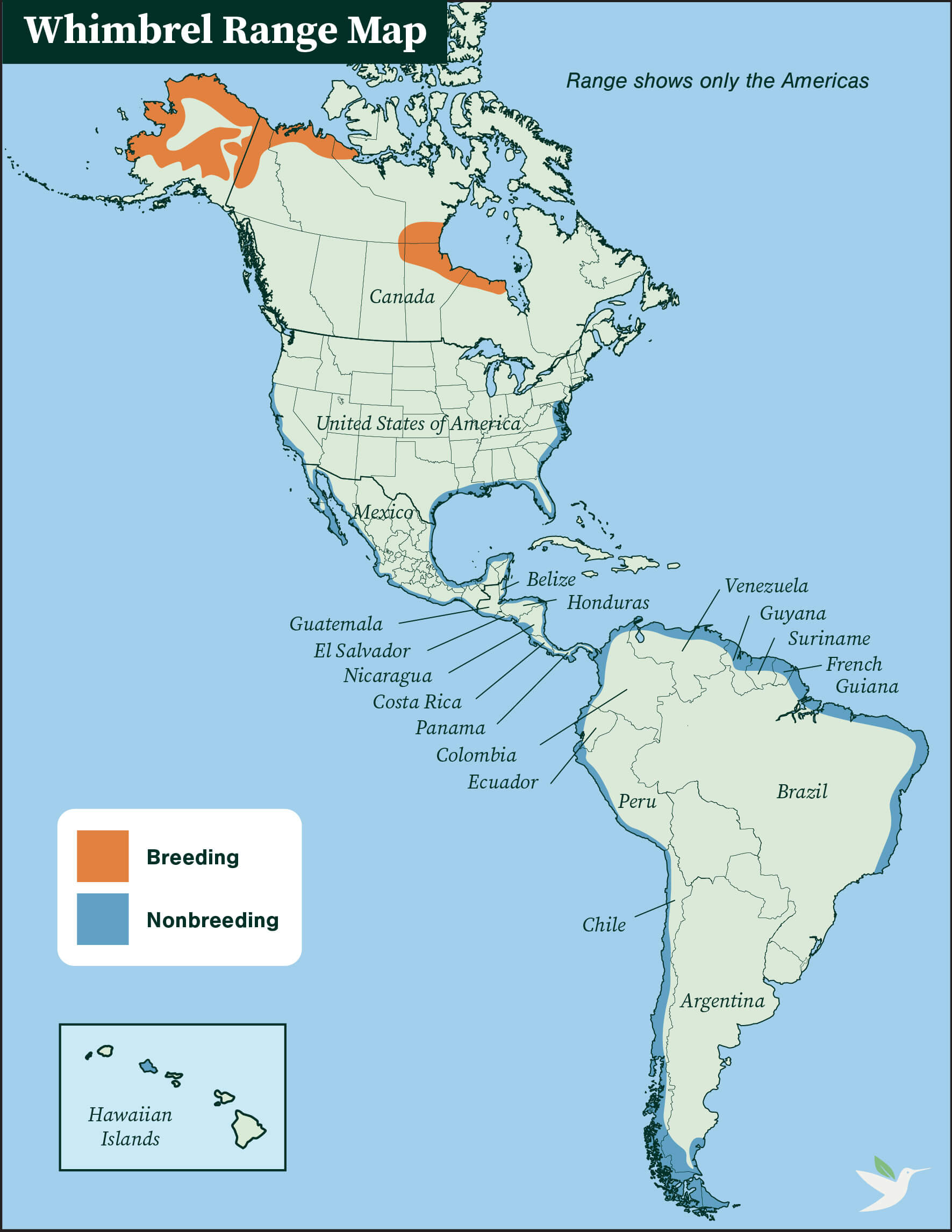
The Whimbrel is a long-distance migrant, with some individuals flying nonstop for thousands of miles between breeding and wintering areas. North American Whimbrels migrate as far as 2,500 miles between breeding grounds in the Arctic and wintering grounds along the east and west coasts of the U.S., Mexico, Central, and South America.
Four subspecies of Whimbrel are recognized around the world. The North American subspecies, N. p. hudsonicus, nests in two separate populations — one in Alaska/northwestern Canada, and the second along the western and southern shores of the Hudson Bay.
North American Whimbrels winter across a wide range that stretches from both U.S. coasts south along the coasts of Central and South America.
Conservation of the Whimbrel
Destruction or development of coastal wetlands and development of tundra for oil and gas infrastructure threaten Whimbrel habitats.
Rising sea levels could wipe out important Whimbrel nesting, stopover, and wintering habitats. Any increase in the number and severity of hurricanes due to climate change could make this bird's long overseas migrations even more perilous.
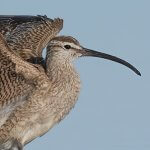
Help support ABC's conservation mission!
Whimbrels are exposed to a variety of harmful environmental contaminants from runoff and water pollution. One study in Chile showed high levels of cadmium in Whimbrels and their prey caused by untreated mining waste.
ABC's Adam Smith, who directs its Motus Wildlife Tracking System partnerships and implementation in the U.S., recently participated in Whimbrel field research in South Carolina that used tracking technology to evaluate this species' site fidelity to foraging and roosting areas. The researchers published their results, which could help to create more effective conservation and management actions for migrating Whimbrels.
Get Involved
Policies enacted by the U.S. Congress and federal agencies, such as the U.S. Fish and Wildlife Service, have a huge impact on migratory birds. You can help shape these rules for the better by telling lawmakers to prioritize birds, bird habitat, and bird-friendly measures. To get started, visit ABC's Action Center.
Living a bird-friendly life can have an immediate impact on migratory birds in the United States. Doing so can be as easy as adding native plants to your garden, avoiding pesticides, and keeping cats indoors. To learn more, visit our Bird-Friendly Life page.
American Bird Conservancy and our Migratory Bird Joint Venture partners have improved conservation management on more than 8.5 million acres of U.S. bird habitat — an area larger than the state of Maryland — over the last ten years. That's not all: With the help of international partners, we've established a network of more than 100 areas of priority bird habitat across the Americas, helping to ensure that birds' needs are met during all stages of their lifecycles. These are monumental undertakings, requiring the support of many, and you can help by making a gift today.

